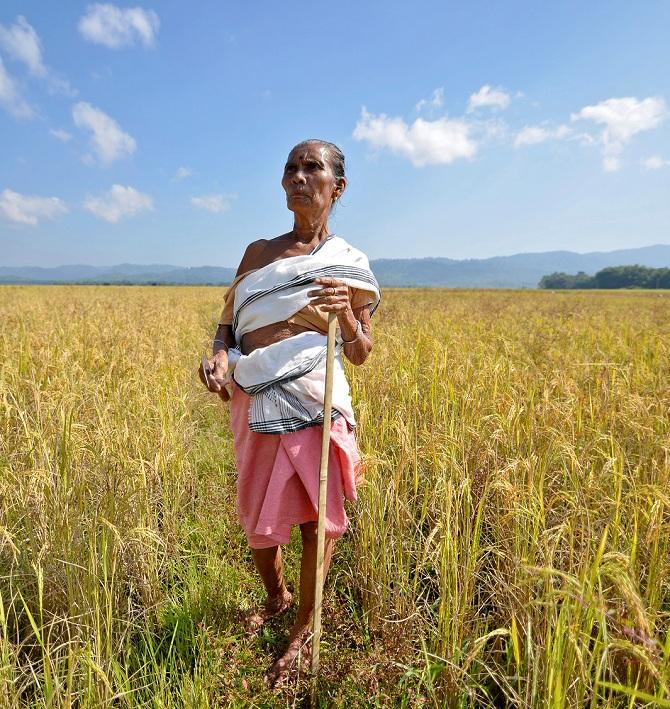Beyond the macro data, there has been little enquiry into the profile of the indebted farmer households, says Shailesh Dobhal.

Photograph: Anuwar Hazarika/Reuters.
Four states in the country -- Uttar Pradesh, Karnataka, Maharashtra and Punjab -- have announced farm loan waivers amounting to almost half-a-per cent of the country's gross domestic product (GDP). HSBC's Pranjul Bhandari and Aayushi Chaudhary estimate that it may go up to 0.75 per cent of GDP if other states like Madhya Pradesh, Haryana, Tamil Nadu and Rajasthan also join the waiver bandwagon.
Much has been written on how farm loans waivers may be not be the panacea for rural distress, and that it may end up destroying the credit culture and end up hurting the states' and the banks' balance sheets. Experts have opined that for a credible turnaround in rural India deep-rooted reforms across land and labour markets is essential, and so is massive public investment on irrigation.
All very sensible interpretations and suggestions, even imminent if you were to believe the politicians. However, that is not the point of this column.
Beyond the macro data, there has been little enquiry into the profile of the indebted farmer.
For instance, how is this rural indebtedness spread across landless and landholding households?
Or what are the income and debt levels segmented across land sizes?
How leveraged is a marginal farmer household vis-à-vis a big farmer?
A new study, Household Survey on India's Citizen Environment & Consumer Economy, by independent think-tank People Research on India's Consumer Economy (PRICE) across 61,000 households reveals some interesting insights on the indebted farmer.
Sample this. Of the half-a-million large farmer households (defined as owning over 10 hectares) in the country, around 57 per cent are indebted, the highest proportion across all rural households.
Of the 184 million-odd rural households, a third (around 55 million) have taken loans from either formal source like banks and credit cooperatives or informal channels like the local moneylenders.
In fact, indebtedness goes up with the size of the land holdings in rural India. While just 27 per cent of the 104 million-odd landless rural households has taken any loan, the figure inches up to 33 per cent among the 55.5 million marginal farmer households who typically own up to one hectare of land. For around 2 million medium farmer households with land holdings between four and 10 hectares, almost one in two are indebted.
Mortgaging of assets to avail of a loan is also directly proportional to land holdings. While just 17 per cent of landless households have mortgaged assets, it goes up to 39 per cent for marginal farmer households, and stays above the half-way mark for all farmer households with landholding over one hectare.
Absolute average annual household debt rises with the size of farm holdings -- a low of ₹55,567 for indebted landless households to a high of ₹2,01,296 for larger farmer households with loans.
Bring their income, and as a concomitant measure surplus, into the equation and the picture starts to look different as far as vulnerability goes. Debt owning landless households earn ₹1,50,850 a year, and its goes up to ₹4,75,404 for large farmer households.
On debt-to-income leverage, it is the medium farmer households that are most stressed, with a ratio of 0.62. Though landless households seem less stressed here, with a ratio at just 0.37, what makes their case a lot worse is that over two-thirds of the households availing of credit here do so from the usurious local moneylender.
Critically, most of the loans by landless households are for non-agricultural, non-productive purposes like health emergency, weddings and/or meeting other social obligations, and this completes the vicious debt cycle for poorest of rural poor.
Among land owning households, large farmer households are the least leveraged at 0.42.
Large farmer households are also high on formal finance (43 per cent of indebted households here have availed of loan from formal sources).
Moreover, with over two-thirds of large farmer loans taken for agricultural purposes, it is easy to see who benefits the most from any universal loan waiver scheme.












 © 2025
© 2025